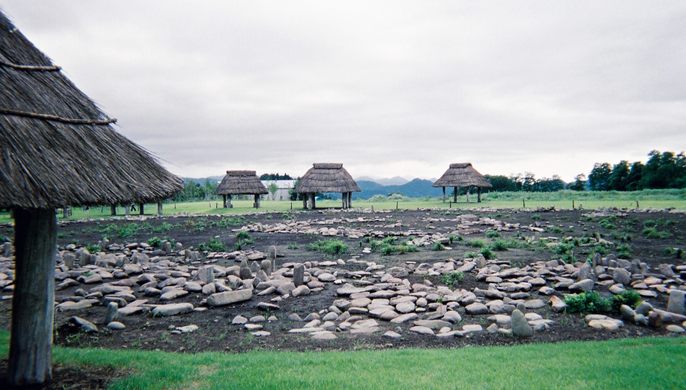Ōyu Stone Circles
Constructed thousands of years ago, these stone circles offer incredible insight into the lives of the people who built them.
In a field in the northern Japanese city of Kazuno lives an archaeological site known as the Ōyu Stone Circles. These Late Jomon-era artifacts (from roughly 2,000 to 1,500 BCE) are exactly what they sound like: two large circles made up entirely of small stones. That doesn’t make them simple, though.
These ancient circles sit atop a manmade plateau, and their construction and purpose offer illuminating details about the people who once used them.
The “Manza” circle is the larger of the pair at about 150 feet (46 meters) in diameter. The slightly smaller circle, called “Nonakado” is located roughly 300 feet (90 meters) away. Both are concentric circles, with a smaller ring inside the larger one. Clusters of rocks within the circles, including elongated stones standing straight up with surrounding stones in a radiating pattern, illustrate that the construction is in fact, a sundial—used to predict the movements of the sun, the winter solstice, the vernal equinox, and pointing toward the sunset on the summer solstice.
The circles are separated by Akita Prefectural Route 66, and were designated a Special National Historic Site of Japan in 1956—just 25 years after being discovered, and about five years after excavations. The stones themselves are from the nearby Oyu River a few kilometers away.
Around the Oyu Stone Circles are a series of huts (made up of four large posts and a thatched roof) along with other remnants of life: everyday objects, items possibly used for worship, pit storage and dwellings, garbage dumps and even stone swords have been discovered. Aside from these artifacts, little is known about the settlement that once used the stone circles. But an understanding of the sun and a great deal of labor were required to create these long-lasting structures.
Know Before You Go
The site is open from 9 a.m. to 6 p.m. from April through October, and 9 a.m to 4:30 p.m. from November through March, with closings for holidays. You can get there by car (off the Tohoku Jukan Expressway) or bus (from the nearby Hawana Line station). Admission is about $2 for adults and $1 for children. The site is south of town on the 66.


















Follow us on Twitter to get the latest on the world's hidden wonders.
Like us on Facebook to get the latest on the world's hidden wonders.
Follow us on Twitter Like us on Facebook